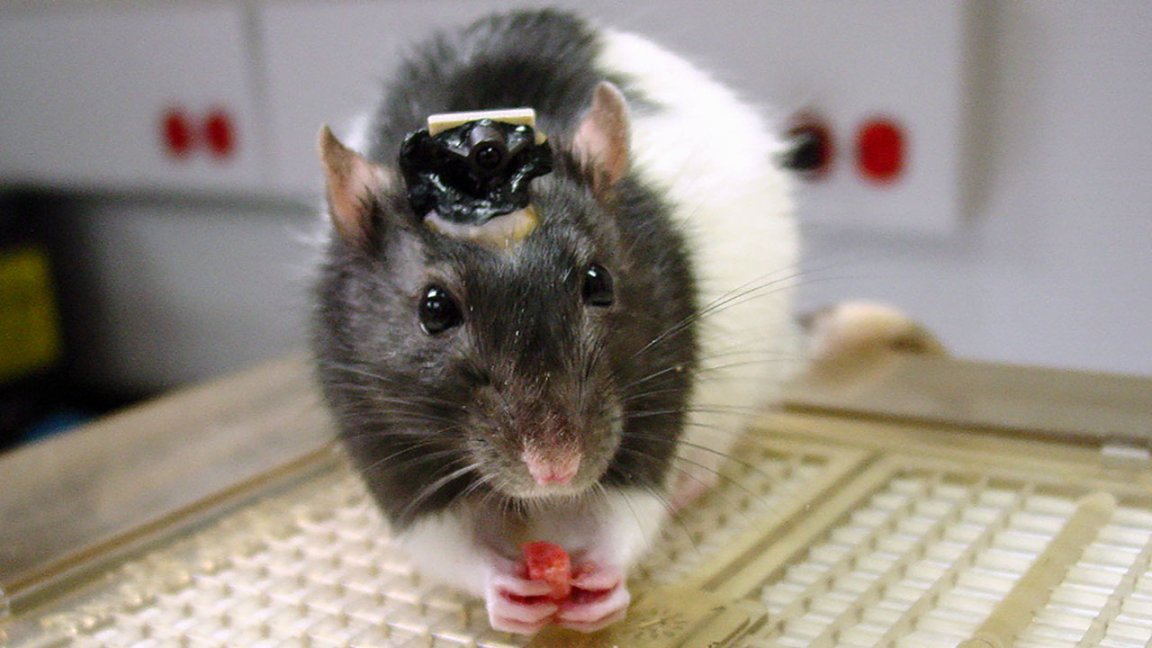
Rats “Seeing” Infrared
Two years ago, neuroscientists surgically implanted an infrared-detecting electrode into a rat’s somatosensory cortex of rats, the part of their brain that processes touch. The other end of the sensor was outside of the head in order to receive infrared light from the environment. When it did, the sensor sent electrical signals to the rats’ brain that give them a physical sensation. Within 40 days, the rats learned to associate infrared with a reward-based task in which they followed the light to a bowl of water.
In a new experiment, three more electrodes were inserted at equal spaces from each other to allow the rats to have 360 degrees of infrared perception. They learned the same water-reward task in just 4 days. The researchers then started redirecting the infrared—this time they inserted the electrode into the rats’ visual cortex, allowing them to “see” infrared. Amazingly, they learned the same water-reward task within a day.
The Implications
Proving that introducing a new sense doesn’t negatively affect the existing ones is critical, as that would destroy any potential therapeutic application. In this instance, the fact that the new infrared “sense” integrated nicely with both vision and touch is an illustration of the great plasticity of the nervous system. The rats’ quick learning also suggests that the human brain may also be capable handling such a new sense. The findings are encouraging to researchers trying to develop sensory prosthetic devices that could one day augment human senses.